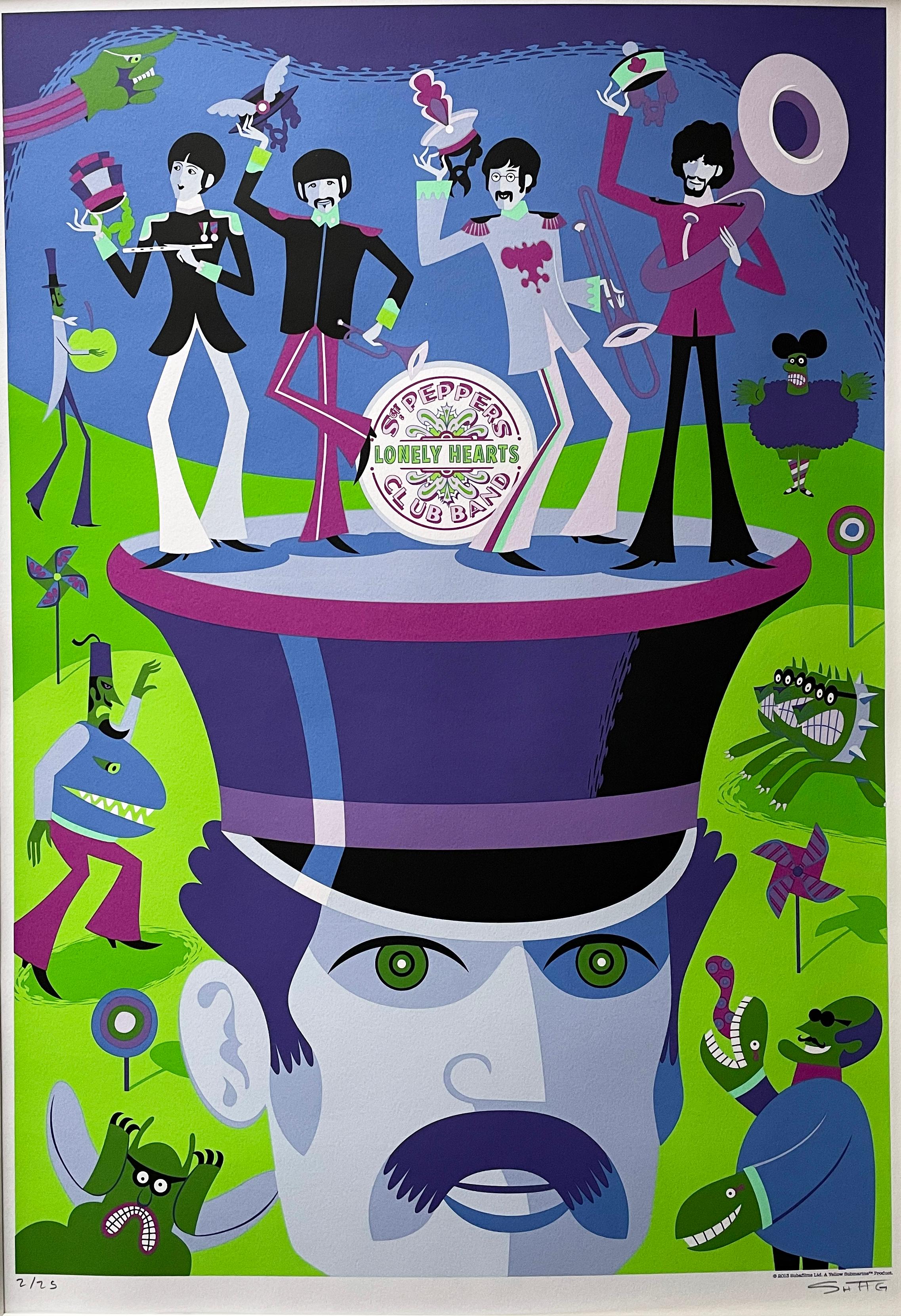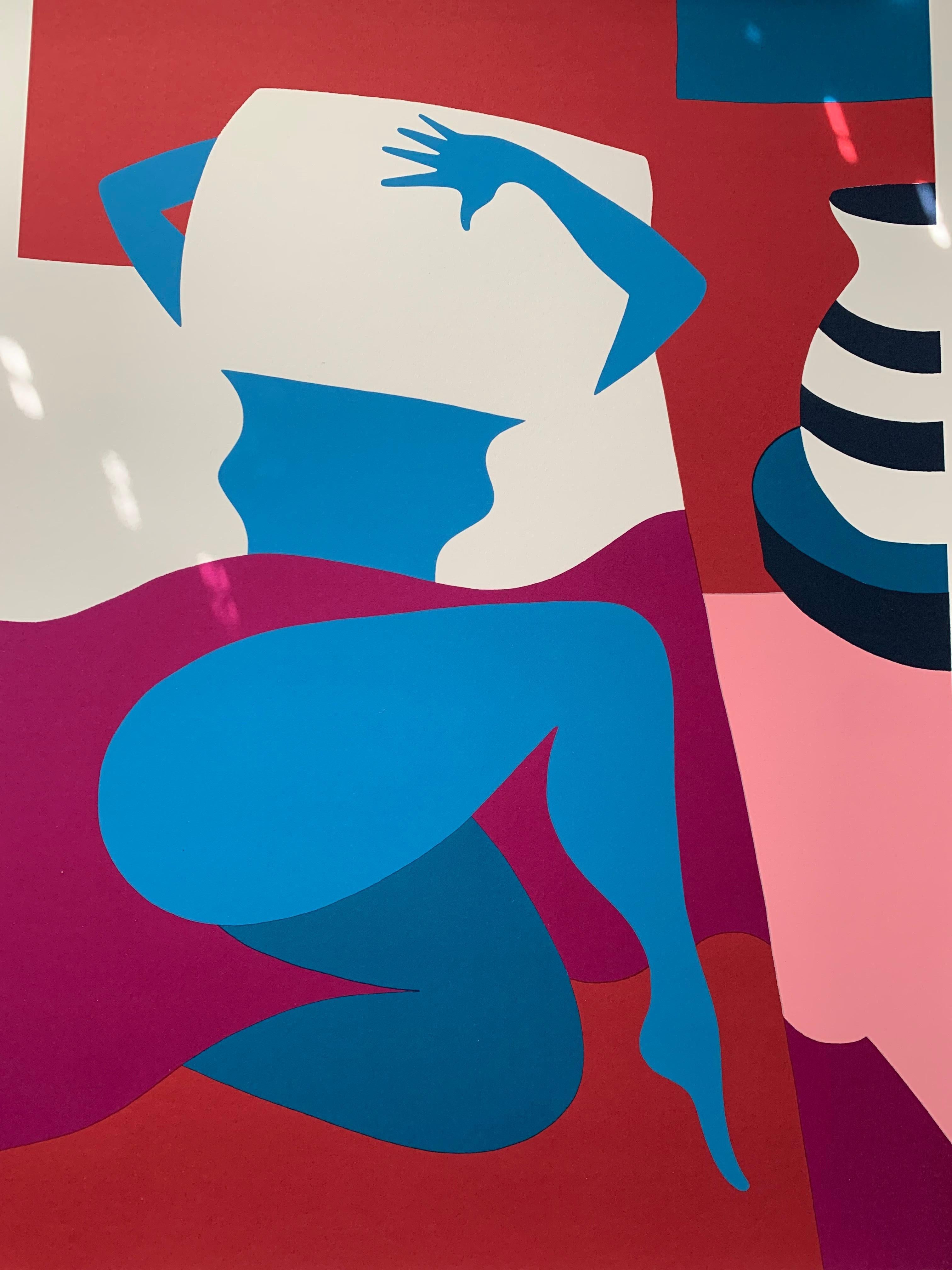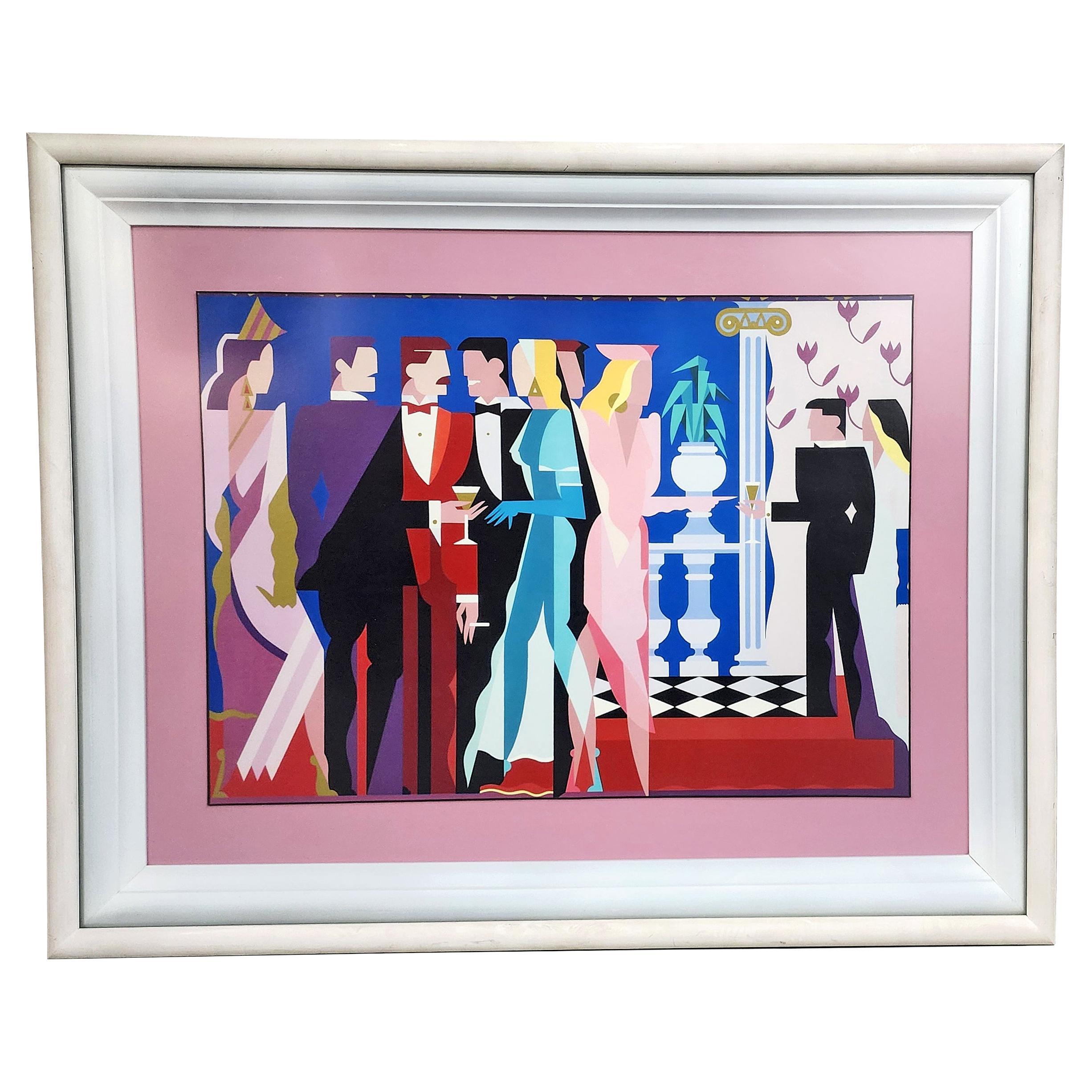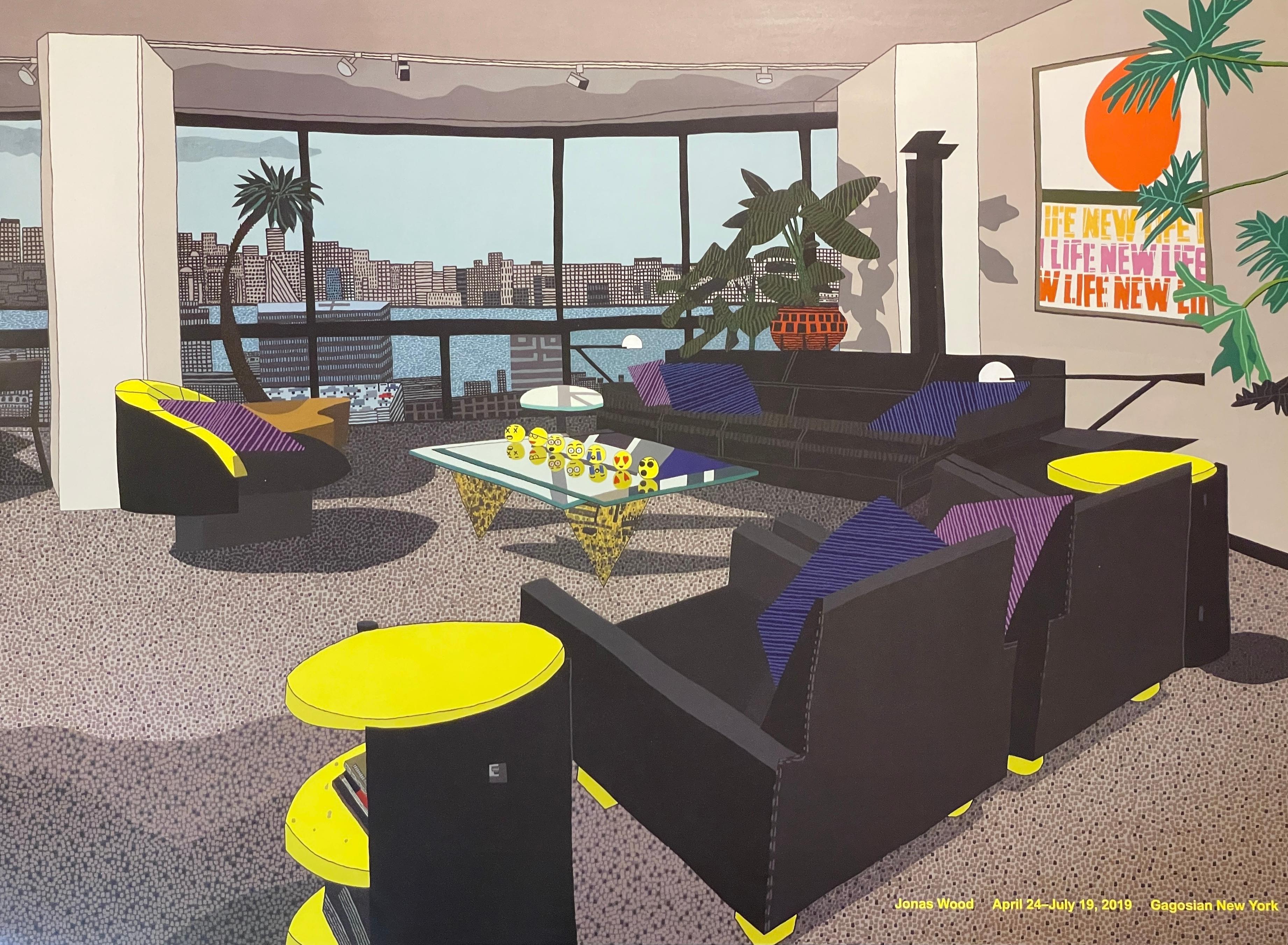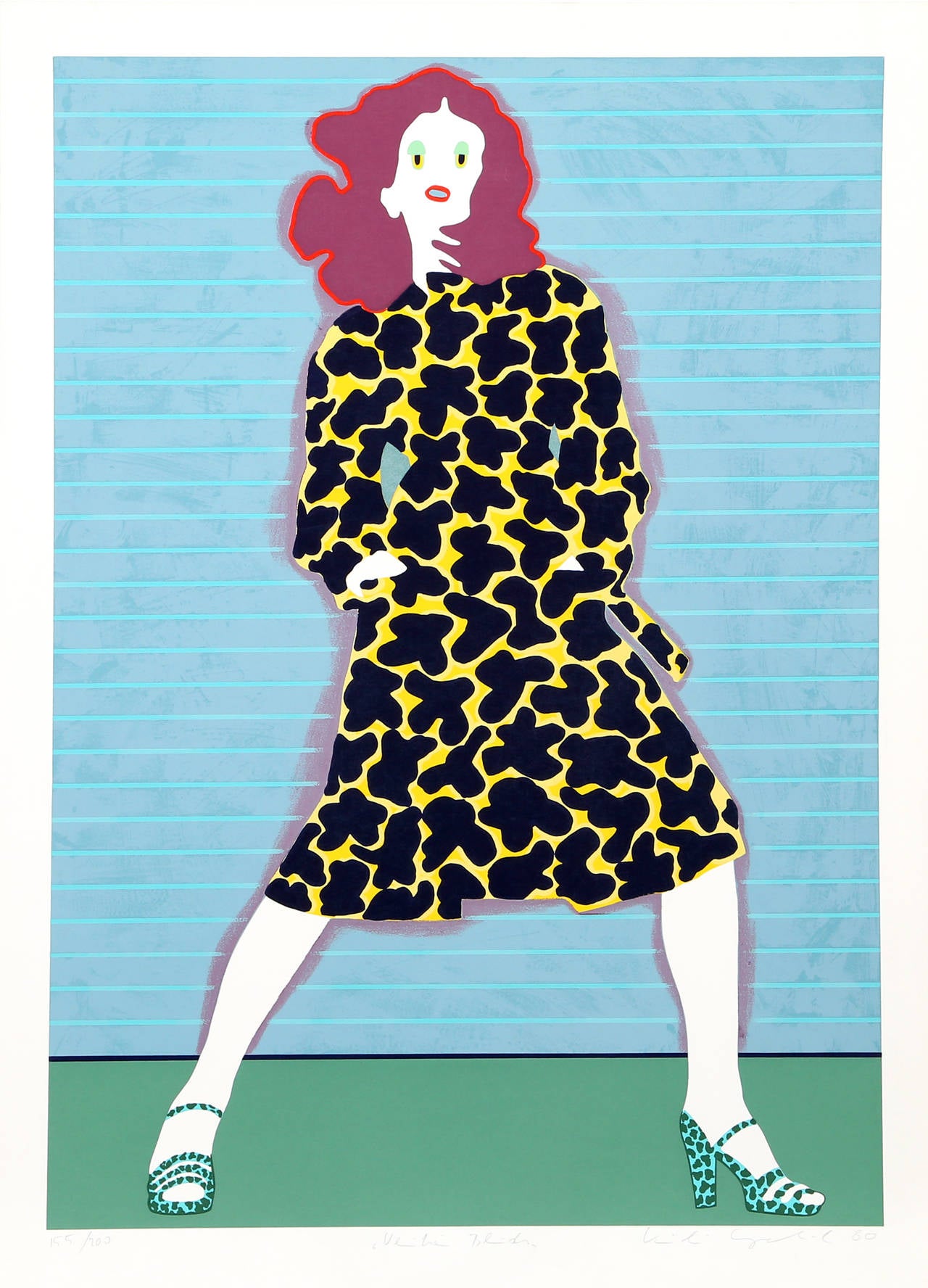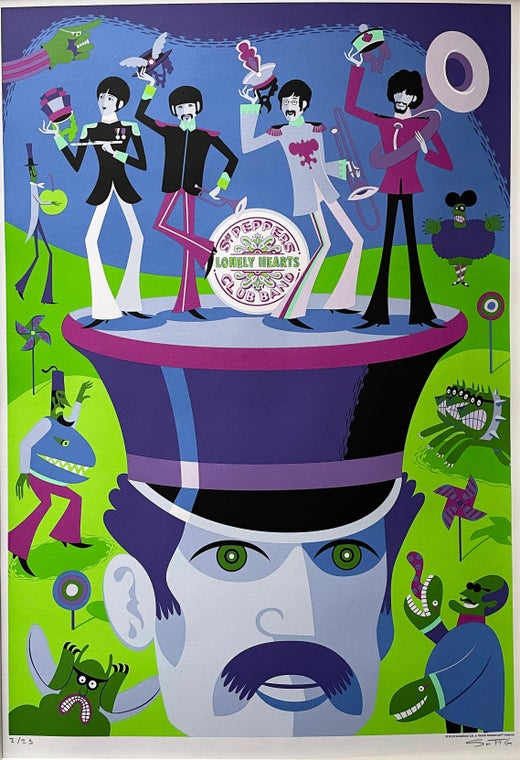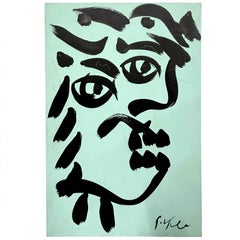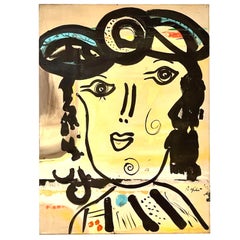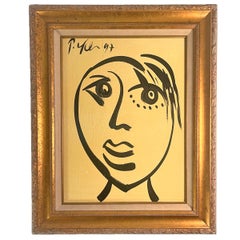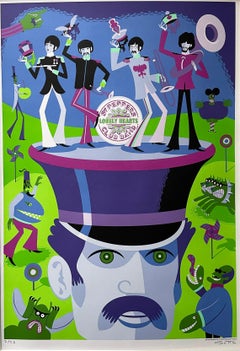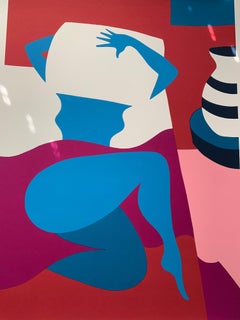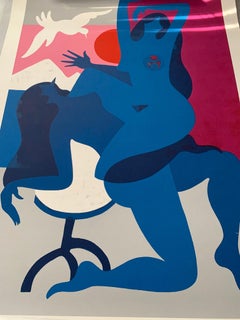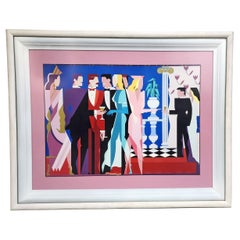Items Similar to “The Missing Suitors” by SHAG aka Josh Agle
Want more images or videos?
Request additional images or videos from the seller
1 of 10
Josh Agle“The Missing Suitors” by SHAG aka Josh Agle2003
2003
$1,080
$1,35020% Off
£824.67
£1,030.8320% Off
€938.91
€1,173.6420% Off
CA$1,516.49
CA$1,895.6120% Off
A$1,657.82
A$2,072.2820% Off
CHF 877.06
CHF 1,096.3320% Off
MX$19,838.49
MX$24,798.1220% Off
NOK 11,159.35
NOK 13,949.1920% Off
SEK 10,215.26
SEK 12,769.0720% Off
DKK 7,013.10
DKK 8,766.3820% Off
About the Item
The Missing Suitors is a limited edition 13 color hand-pulled Serigraph by artist Josh Agle aka SHAG. Hand signed and numbered 214/300 by the artist. Comes with a Certificate of authenticity (C.O.A.).
Shag is an American born painter, designer and illustrator working in Southern California. His distinctive artistic style draws from commercial illustration and has an attitude and sly sense of humor which is unmistakably of our time. His paintings celebrate consumerism and consumption on vividly colored sharply rendered panels; the characters drink, smoke and eat in lavish, stylish surroundings.
Shag's work is categorized as lowbrow art, an underground visual art movement that arose in the Los Angeles, California area in the late 1960s with cultural roots in underground comix, punk music, tiki culture, graffiti, and hot-rod cultures of the street. Also known as pop surrealism.
- Creator:Josh Agle (1962, American)
- Creation Year:2003
- Dimensions:Height: 29.5 in (74.93 cm)Width: 12 in (30.48 cm)Depth: 0.03 in (0.77 mm)
- Medium:
- Movement & Style:
- Period:
- Condition:Very good original condition.
- Gallery Location:Hudson, NY
- Reference Number:1stDibs: LU1625210124492
Josh Agle
Based in Los Angeles, Josh Agle, also known as Shag, makes slick, narrative kitsch paintings that recall the early 1960s advertising illustration, Bossa Nova album art and Disney animation. Rife with businessmen in skinny suits and women in skin-tight cat costumes drinking martinis, Shag’s paintings depict an ominous world of stylized, witty urbanites. His paintings have spawned a book, an album, a film, and a musical. Shag was commissioned to create 13 illustrations to commemorate the 40th anniversary of Disneyland's Haunted Mansion.
About the Seller
No Reviews Yet
Vetted Professional Seller
Every seller passes strict standards for authenticity and reliability
1stDibs seller since 2021
17 sales on 1stDibs
- ShippingRetrieving quote...Shipping from: Hudson, NY
- Return Policy
More From This Seller
View AllColorful Portrait Painting on Board by Peter Keil w Tiffany Blue Background
By Peter Keil
Located in Hudson, NY
This modern abstract painting by Peter Keil is on a smooth masonite board with a painted Tiffany Blue background, black abstract portrait. Here you ...
Category
Late 20th Century Abstract Figurative Paintings
Materials
Masonite, Acrylic, Board
Peter Robert Keil Acrylic on Canvas Colorful & Dynamic Portrait
By Peter Keil
Located in Hudson, NY
Peter Robert Keil painting on stretched thick canvas. Lovely colorful portrait.
Category
Mid-20th Century Abstract Expressionist Abstract Paintings
Materials
Canvas, Paint
$1,480 Sale Price
20% Off
Colorful Portrait Painting on Board by Peter Keil
By Peter Keil
Located in Hudson, NY
This modern abstract painting by Peter Keil is on a smooth masonite board with a painted grey background, black abstract portrait with many colors. Here you certainly see the Picasso...
Category
Late 20th Century Abstract Figurative Paintings
Materials
Masonite, Acrylic, Board
$464 Sale Price
45% Off
Peter Robert Keil Gold Framed Painting on Canvas Signed and Dated with COA
By Peter Robert Keil
Located in Hudson, NY
Peter Keil's textured painting on canvas. Signed and dated 1997. This one is stunning in person. Background paint is textured on the canvas. Amazing gilt frame with a textured fabric...
Category
Mid-20th Century Cubist Figurative Paintings
Materials
Gold Leaf
Colorful Portrait Painting on Board by Peter Keil
By Peter Keil
Located in Hudson, NY
This modern abstract painting by Peter Keil is on a smooth masonite board with a painted grey background, black abstract portrait with many colors. Here you certainly see the Picasso...
Category
Late 20th Century Abstract Figurative Paintings
Materials
Masonite, Acrylic, Board
$464 Sale Price
45% Off
Abstract Painting on Canvas by Steve Balkin 'VENUS de FLORIDE'
Located in Hudson, NY
Steve Balkin (1938-2023)
This painting was purchased from Balkin's estate. It came from his home in upstate NY. It is titled "Venus de Floride", dated 8/2...
Category
21st Century and Contemporary Abstract Expressionist Paintings
Materials
Acrylic, Canvas
You May Also Like
May I Introduce You
By Josh Agle
Located in Norwich, GB
Josh Agle (born August 31, 1962) is an American artist, better known by the nickname Shag.
Agle's nickname is derived from the last two letters of his first name, and the first two ...
Category
21st Century and Contemporary Street Art Figurative Prints
Materials
Screen
No Work Today Screenprint Abstract Figurative Signed and Numbered Pop Art
By Piet Parra 1
Located in Draper, UT
Parra
"No Work Today"
Signed limited edition screenprint (x/250)
50 cm x 70 cm
Excellent condition
Category
2010s Abstract Figurative Prints
Materials
Screen
Sliding Doors Signed and Numbered Print Modern Figurative Art
By Piet Parra 1
Located in Draper, UT
~Parra~
"Sliding Doors" (2017)
Screen-print on white Arches paper.
Signed and numbered by the artist.
Edition 0f 250.
50 × 70 cm / 19 7/10 × 27 3/5 in
Dutch illustrator, painter, ...
Category
2010s Abstract Geometric Figurative Prints
Materials
Archival Paper
1984s Limited Edition Serigraphy 'Night People I' by Italian Giancarlo Impiglia
By Giancarlo Impiglia
Located in North Miami, FL
1984s limited edition framed serigraphy 'Night People I' by Italian artist Giancarlo Impiglia, United States
By: Giancarlo Impiglia
Material: metal, wood, paint, acrylic, paper
Tech...
Category
Vintage 1980s American Post-Modern Prints
Materials
Wood, Paint, Paper, Acrylic
Jonas Wood Gagosain Exhibition Print April 29th, July 19th New York Contemporary
By Jonas Wood
Located in Draper, UT
This print featuring Jersey City Apartment (2019) was produced in 2019, in conjunction with the exhibition Jonas Wood at Gagosian, 555 West 24th Street, New York. The exhibition incl...
Category
2010s Contemporary Interior Prints
Materials
Lithograph
Venetian Blinds, Pop Art Screenprint by Kiki Kogelnik
By Kiki Kogelnik
Located in Long Island City, NY
Artist: Kiki Kogelnik, Austrian (1935 - 1997)
Title: Venetian Blinds
Year: 1980
Medium: Screenprint, signed and numbered in pencil
Edition: 200, AP 35
...
Category
1980s Pop Art Figurative Prints
Materials
Screen
